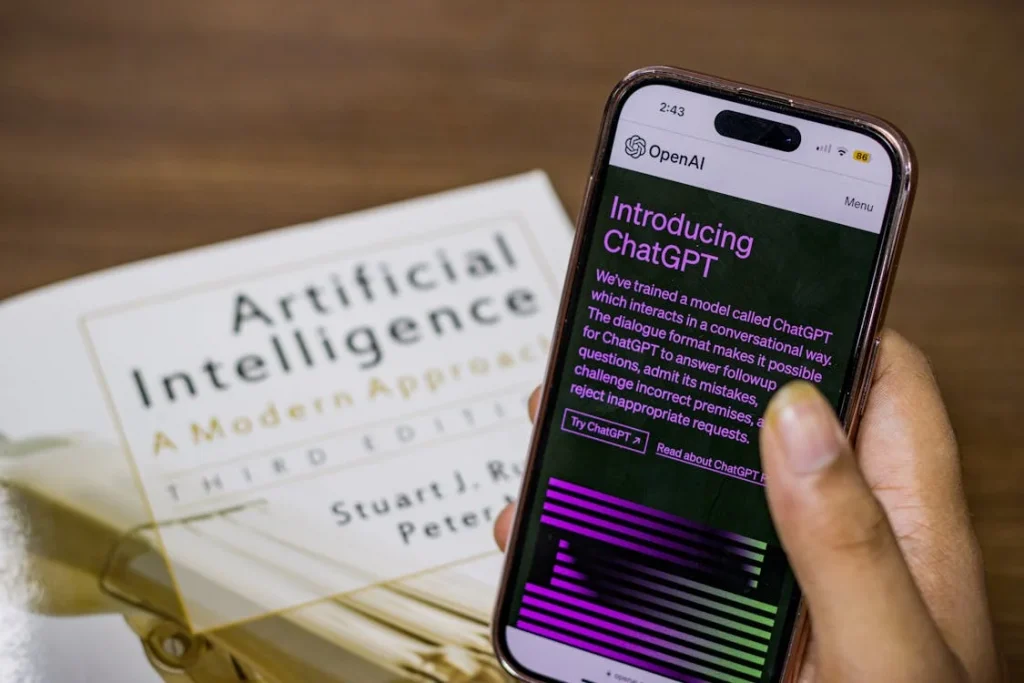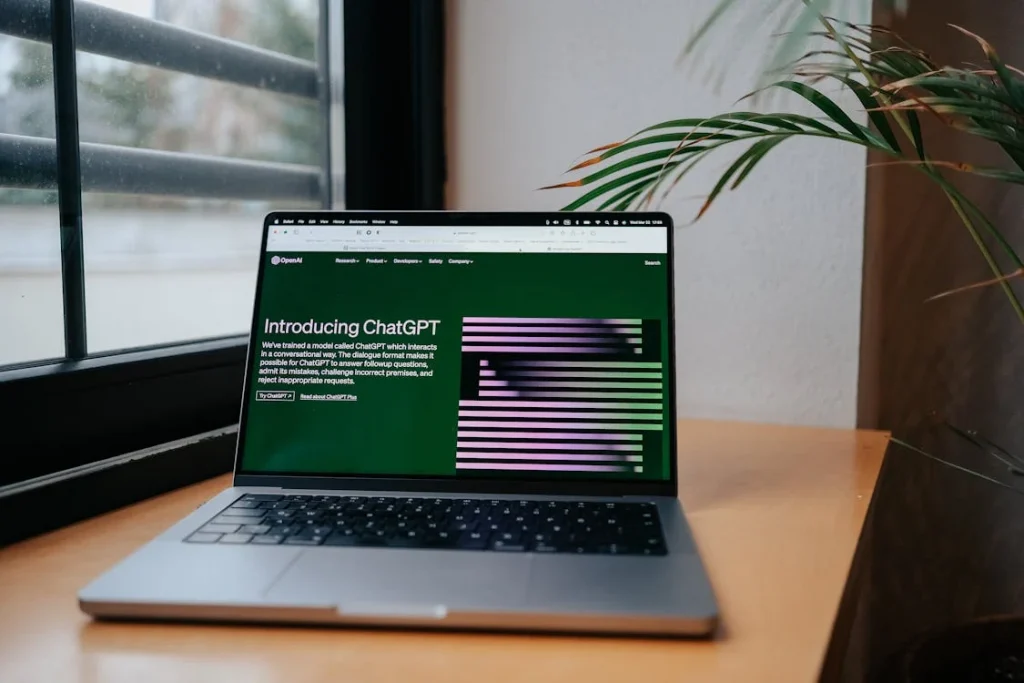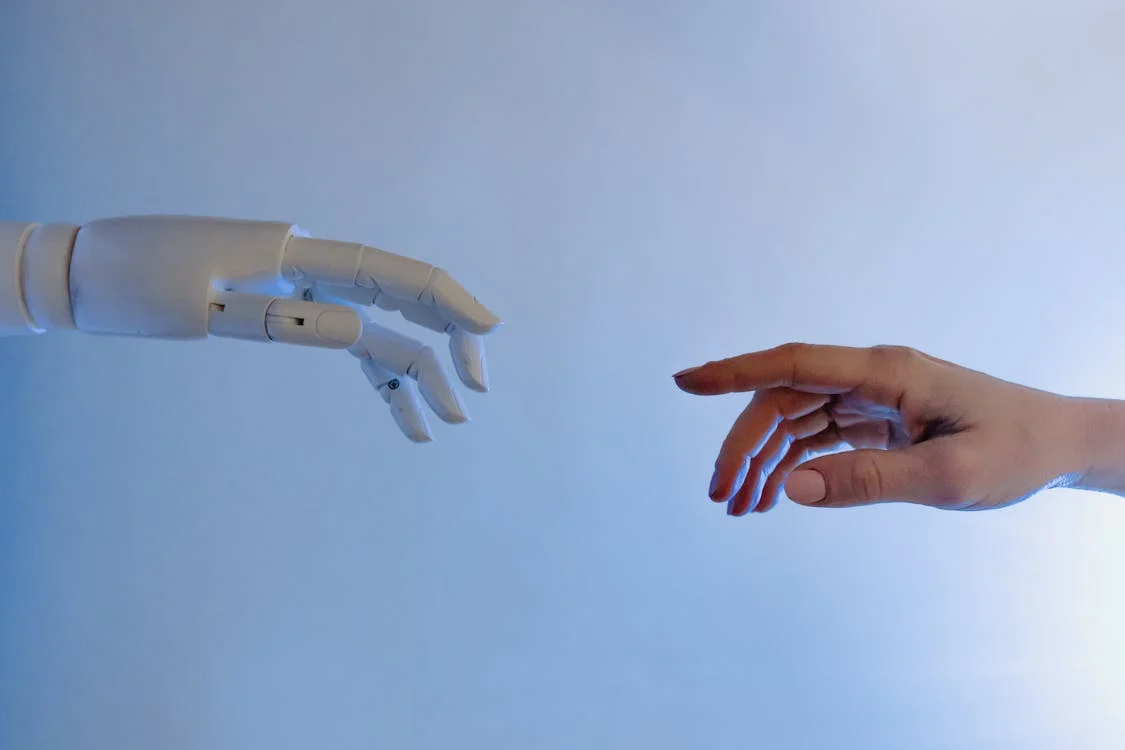Have you ever wondered who sets the rules for AI technologies that are increasingly shaping our world? The European Union (EU) is leading the charge with the AI Act, a groundbreaking initiative aimed at steering the ethical development of AI. Think of the EU as setting the global stage for AI regulation. Their latest proposal, the AI Act, could significantly change the technological landscape.
Why should we, especially as students and future professionals, care? The AI Act represents a crucial step towards harmonizing technological innovation with our core ethical values and rights. The EU’s path to formulating the AI Act offers insights into navigating the thrilling yet intricate world of AI, making sure it enriches our lives without compromising ethical principles.
How the EU shapes our digital world
With the General Data Protection Regulation (GDPR) as a foundation, the EU extends its protective reach with the AI Act, aiming for transparent and responsible AI applications across various sectors. This initiative, while grounded in EU policy, is balanced to influence global standards, setting a model for responsible AI development.
Why does this matter to us
The AI Act is set to transform our engagement with technology, promising more powerful data protection, greater transparency in AI operations, and equitable use of AI in crucial sectors like healthcare and education. Beyond influencing our current digital interactions, this regulatory framework is charting the course for future innovations in AI, potentially creating new avenues for careers in ethical AI development. This shift is not just about improving our day-to-day digital interactions but also about shaping the future landscape for tech professionals, designers, and owners.
| Quick thought: Consider how the GDPR and AI Act might transform your interaction with digital services and platforms. How do these changes affect your daily life and future career opportunities? |
Navigating the rules: What the AI Act means for the future of tech
Delving into the AI Act, we see a commitment to ensuring AI’s integration into key sectors like healthcare and education is both transparent and just. The AI Act is more than a regulatory framework; it’s a forward-looking guide designed to ensure AI’s integration into society is both safe and honest.
High consequences for high risks
The AI Act sets strict regulations on AI systems critical to sectors such as healthcare and education, requiring:
- Data clarity. AI must clearly explain data usage and decision-making processes.
- Fair practice. It strictly prohibits AI methods that could lead to unfair management or decision-making.
Opportunities among the challenges
Innovators and startups, while navigating these new rules, find themselves at the corner of challenge and opportunity:
- Innovative compliance. The journey towards compliance is pushing companies to innovate, developing new ways to align their technologies with ethical standards.
- Market differentiation. Following the AI Act not only ensures ethical practices but also sets technology apart in a market that values ethics more and more.
Getting with the program
To fully embrace the AI Act, organizations are encouraged to:
- Improve clarity. Offer clear insights into how AI systems function and make decisions.
- Commit to fairness and security. Ensure AI applications respect user rights and data integrity.
- Engage in collaborative development. Work alongside stakeholders, including end-users and ethics experts, to promote AI solutions that are both innovative and responsible.
| Quick thought: Imagine you’re developing an AI tool to help students manage their study time. Beyond functionality, what steps would you take to ensure your application adheres to the AI Act’s requirements for transparency, fairness, and user respect? |

AI regulations globally: A comparative overview
The global regulatory landscape showcases a variety of strategies, from the UK’s innovation-friendly policies to China’s balanced approach between innovation and oversight, and the US’s decentralized model. These diverse approaches contribute to a rich tapestry of global AI governance, highlighting the need for a collaborative dialogue on ethical AI regulation.
European Union: A leader with the AI Act
The EU’s AI Act is recognized for its comprehensive, risk-based framework, highlighting data quality, human oversight, and strict controls on high-risk applications. Its proactive stance is shaping discussions on AI regulation worldwide, potentially setting a global standard.
United Kingdom: Promoting innovation
The UK’s regulatory environment is designed to encourage innovation, avoiding overly restrictive measures that could slow technological advancement. With initiatives like the International Summit for AI Safety, the UK is contributing to global dialogues on AI regulation, blending technological growth with ethical considerations.
China: Navigating innovation and control
China’s approach represents a careful balance between promoting innovation and supporting state oversight, with targeted regulations on appearing AI technologies. This dual focus aims to support technological growth while safeguarding societal stability and ethical usage.
United States: Embracing a decentralized model
The US adopts a decentralized approach to AI regulation, with a mix of state and federal initiatives. Key proposals, like the Algorithmic Accountability Act of 2022, illustrate the country’s commitment to balancing innovation with responsibility and ethical standards.
Reflecting on the diverse approaches to AI regulation underscores the importance of ethical considerations in shaping the future of AI. As we navigate these varied landscapes, the exchange of ideas and strategies is crucial for promoting global innovation while ensuring the ethical use of AI.
| Quick thought: Considering the different regulatory environments, how do you think they will shape the development of AI technology? How can these varied approaches contribute to the ethical advancement of AI on a global scale? |
Visualizing the differences
When it comes to facial recognition, it’s like walking a tightrope between keeping people safe and protecting their privacy. The EU’s AI Act tries to balance this by setting strict rules on when and how facial recognition can be used by the police. Imagine a scenario where the police could use this tech to quickly find someone who’s missing or stop a serious crime before it happens. Sounds good, right? But there’s a catch: they usually need a green light from higher-ups to use it, ensuring it’s really necessary.
In those urgent, hold-your-breath moments where every second counts, the police might use this tech without getting that okay first. It’s a bit like having an emergency ‘break glass’ option.
| Quick thought: How do you feel about this? If it could help keep people safe, do you think it’s okay to use facial recognition in public places, or does it feel too much like Big Brother watching? |
Being careful with high-risk AI
Moving from the specific example of facial recognition, we now turn our attention to a broader category of AI applications that have profound implications for our daily lives. As AI technology advances, it’s becoming a common feature in our lives, seen in apps that manage city services or in systems that filter job applicants. The EU’s AI Act categorizes certain AI systems as ‘high risk’ because they play crucial roles in critical areas like healthcare, education, and legal decisions.
So, how does the AI Act suggest managing these influential technologies? The Act lays out several key requirements for high-risk AI systems:
- Transparency. These AI systems must be transparent about making decisions, ensuring that the processes behind their operations are clear and understandable.
- Human oversight. There must be a person watching over the AI’s work, ready to step in if anything goes wrong, ensuring people can always make the final call if needed.
- Record-keeping. High-risk AI must keep detailed records of their decision-making processes, similar to keeping a diary. This guarantees that there’s a path for understanding why an AI made a particular decision.
| Quick thought: Imagine you’ve just applied to your dream school or job, and an AI is helping make that decision. How would you feel knowing that strict rules are in place to ensure the AI’s choice is appropriate and clear? |

Exploring the world of generative AI
Imagine asking a computer to write a story, draw a picture, or compose music, and it just happens. Welcome to the world of generative AI—technology that prepares new content from basic instructions. It’s like having a robotic artist or author ready to bring your ideas to life!
With this incredible capability comes a need for careful oversight. The EU’s AI Act is focused on ensuring these “artists” respect everyone’s rights, especially when it comes to copyright laws. The purpose is to prevent AI from improperly using others’ creations without permission. Generally, AI creators are required to be transparent about how their AI has learned. Yet, a challenge presents itself with pre-trained AIs—ensuring they comply with these norms is complex and has already shown notable legal disputes.
Moreover, super-advanced AIs, those that blur the line between machine and human creativity, receive additional scrutiny. These systems are monitored closely to prevent issues such as the spread of false information or the making of unethical decisions.
| Quick thought: Picture an AI that can create new songs or artworks. How would you feel about using such technology? Is it important to you that there are rules on how these AIs and their creations are used? |
Deepfakes: Navigating the mix of real and AI-made
Have you ever seen a video that looked real but felt slightly off, like a celebrity saying something they never actually did? Welcome to the world of deepfakes, where AI can make it look like anyone is doing or saying anything. It’s fascinating but also a bit worrying.
To address the challenges of deepfakes, the EU’s AI Acts has put measures in place to keep the boundary between real and AI-created content clear:
- Disclosure requirement. Creators using AI to make lifelike content must openly state that the content is AI-generated. This rule applies whether the content is for fun or for art, making sure viewers know what they’re watching isn’t real.
- Labeling for serious content. When it comes to material that might shape public opinion or spread false info, the rules get stricter. Any such AI-created content has to be clearly marked as artificial unless a real person has checked it to confirm it’s accurate and fair.
These steps aim to build trust and clarity in the digital content we see and use, making sure we can tell the difference between real human work and what’s made by AI.
Introducing our AI detector: A tool for ethical clarity
In the context of ethical AI use and clarity, underscored by the EU’s AI Acts, our platform offers an invaluable resource: the AI detector. This multilingual tool leverages advanced algorithms and machine learning to easily determine whether a paper was generated by AI or written by a human, directly addressing the Act’s call for clear disclosure of AI-generated content.
The AI detector improves clarity and responsibility with features such as:
- Exact AI probability. Each analysis provides a precise probability score, indicating the likelihood of AI involvement in the content.
- Highlighted AI-generated sentences. The tool identifies and highlights sentences in the text that are likely generated by AI, making it easy to spot potential AI assistance.
- Sentence-by-sentence AI probability. Beyond overall content analysis, the detector breaks down AI probability for each individual sentence, offering detailed insights.
This level of detail ensures a nuanced, in-depth analysis that aligns with the EU’s commitment to digital integrity. Whether it’s for the authenticity of academic writing, verifying the human touch in SEO content, or safeguarding the uniqueness of personal documents, the AI detector provides a comprehensive solution. Moreover, with strict privacy standards, users can trust in the confidentiality of their evaluations, supporting the ethical standards the AI Act promotes. This tool is necessary for anyone seeking to navigate the complexities of digital content with transparency and accountability.
| Quick thought: Imagine yourself scrolling through your social media feed and coming across a piece of content. How reassured would you feel knowing a tool like our AI detector could instantly inform you about the authenticity of what you’re seeing? Reflect on the impact such tools could have on maintaining trust in the digital age. |
Understanding AI regulation through leaders’ eyes
As we delve into the world of AI regulation, we hear from key figures in the tech industry, each offering unique perspectives on balancing innovation with responsibility:
- Elon Musk. Known for leading SpaceX and Tesla, Musk often speaks about the potential dangers of AI, suggesting we need rules to keep AI safe without stopping new inventions.
- Sam Altman. Heading OpenAI, Altman works with leaders around the world to shape AI rules, focusing on preventing risks from powerful AI technologies while sharing OpenAI’s deep understanding to help guide these discussions.
- Mark Zuckerberg. The person behind Meta (formerly Facebook) prefers working together to make the most of AI’s possibilities while minimizing any downsides, with his team actively participating in conversations about how AI should be regulated.
- Dario Amodei. With Anthropic, Amodei introduces a new way of looking at AI regulation, using a method that categorizes AI based on how risky it is, promoting a well-structured set of rules for the future of AI.
These insights from tech leaders show us the variety of approaches to AI regulation in the industry. They highlight the ongoing effort to innovate in a way that’s both groundbreaking and ethically sound.
| Quick thought: If you were leading a tech company through the world of AI, how would you balance being innovative with following strict rules? Could finding this balance lead to new and ethical tech advancements? |
Consequences of not playing by the rules
We’ve explored how leading figures in tech work within AI regulations, aiming to balance innovation with ethical responsibility. But what if companies ignore these guidelines, particularly the EU’s AI Act?
Picture this: in a video game, breaking the rules means more than just losing—you also face a big penalty. In the same way, companies that don’t comply with the AI Act could encounter:
- Substantial fines. Companies ignoring the AI Act could be hit with fines reaching millions of euros. This might happen if they aren’t open about how their AI works or if they use it in ways that are off-limits.
- Adjustment period. The EU doesn’t just hand out fines right away with the AI Act. They give companies time to adapt. While some AI Act rules need to be followed immediately, others offer up to three years for companies to implement necessary changes.
- Monitoring team. To ensure compliance with the AI Act, the EU plans to form a special group to monitor AI practices, acting as the AI world’s referees, and keeping everyone in check.
| Quick thought: Leading a tech company, how would you navigate these AI regulations to avoid penalties? How crucial is it to stay within legal boundaries, and what measures would you implement? |

Looking ahead: The future of AI and us
As AI’s capabilities continue to grow, making everyday tasks easier and opening up new possibilities, rules like the EU’s AI Act must adapt alongside these improvements. We’re entering an era where AI could transform everything from healthcare to the arts, and as these technologies become more worldly, our approach to regulation must be dynamic and responsive.
What’s coming up with AI?
Imagine AI getting a boost from super-smart computing or even starting to think a bit like humans. The opportunities are huge, but we also have to be careful. We need to make sure that as AI grows, it stays in line with what we think is right and fair.
Working together across the world
AI doesn’t know any borders, so all countries need to work together more than ever. We need to have big conversations about how to handle this powerful tech responsibly. The EU’s got some ideas, but this is a chat everyone needs to join in on.
Being ready for change
Laws like the AI Act will have to change and grow as new AI stuff comes along. It’s all about staying open to change and making sure we keep our values at the heart of everything AI does.
And this isn’t just up to the big decision-makers or tech giants; it’s on all of us—whether you’re a student, a thinker, or someone who’s going to invent the next major thing. What kind of world with AI do you want to see? Your ideas and actions now can help shape a future where AI makes things better for everyone.
Conclusion
| This article has explored the EU’s pioneering role in AI regulation through the AI Act, highlighting its potential to shape global standards for ethical AI development. By examining the impact of these regulations on our digital lives and future careers, as well as contrasting the EU’s approach with other global strategies, we achieve valuable insights. We understand the critical role of ethical considerations in the progress of AI. Looking ahead, it’s clear that the development of AI technologies and their regulation will require continuous conversation, creativity, and teamwork. Such efforts are crucial to ensure that advancements not only benefit everyone but also honor our values and rights. |
